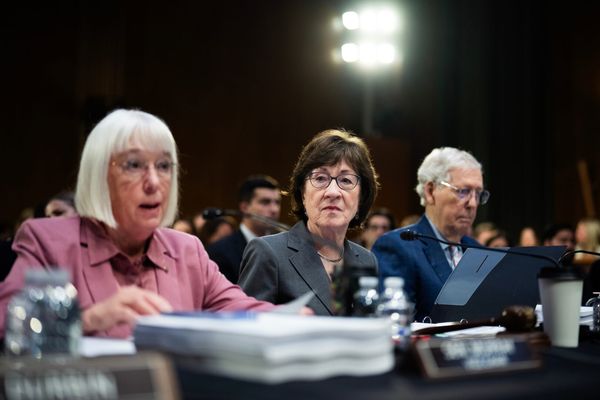Retirement planning can be tough and scary. But Congress is trying to change that.
Eighty-seven percent of Americans are afraid they won't have enough money in retirement, according to a recent survey. So it was a big deal recently when the U.S. House not only passed rules making it easier for workers to save for retirement — the bill is known as Secure 2.0 — but did so on a bipartisan basis.
Are your retirement savings on track, for your age and income? Check this guide.
That makes beefing up retirement savings opportunities for workers one of the few things Washington lawmakers actually seem to agree on.
The bill's nickname is a play on the name of its predecessor law. The nickname suggests that the new package would enhance and expand retirement saving provisions in 2019's Secure Act.
The bill's real name is the Securing a Strong Retirement Act.
Retirement Planning Made Easier
Secure 2.0 does not become law until — and unless — the Senate also passes its version of the retirement planning legislation and President Biden signs the bill. But the House endorsement is a hopeful sign.
What's in Secure 2.0 so far? Dave Stinnett, head of strategic retirement consulting for T. Rowe Price, sees six key provisions. The bill would:
- Expand automatic enrollment in retirement plans.
- Enhance automatic escalation of worker contribution rates.
- Allow employers to help workers pay their student loan debt.
- Delay the age at which workers must start to withdraw money, known as required minimum distributions (RMDs).
- Enlarge catch-up contributions.
- Require certain catch-up contributions to be in the form of Roth contributions.
Beefed Up Retirement Planning Tools
Here's how those new features would work:
Expanded automatic enrollment: Secure 2.0 would require new 401(k) and 403(b) plans to automatically enroll workers as soon as they become eligible, unless workers opt out.
Enhanced auto-escalation: The bill would require plans to automatically increase the percentage of pay that workers kick in each year, within a certain range. Employers would divert 3% to 10% of a worker's pay into his or her savings account. That contribution rate would increase by one percentage point a year until it reaches 10%. Small businesses with 10 or fewer workers would be exempt. So would businesses less than three years old.
Student-debt relief: Secure 2.0 would allow employers to make matching 401(k) contributions equal to the amount the worker pays toward their student loans. The match, going into the 401(k), would enable graduates to save for retirement even if their student loan payments prevent them from contributing to their own retirement account.
More Robust Retirement Options
Delaying RMDs: The age at which workers would have to start RMDs — now age 72 — would be pushed back. Depending on your birthday: Starting in 2023, you could wait until age 73 to take the RMD. That age would rise to 74 in 2030 and to 75 in 2033.
Enlarge catch-up contributions: Just for plan members ages 62 to 64, the current annual limit of $6,500 for catch-up contributions would rise to $10,000. For workers of other ages (ages 50 to 61 and older than 64), the catch-up contribution limit would stay as is. A similar proposed change would apply to IRAs.
Requiring Roth catch-up contributions: Starting in 2023, all catch-up contributions to employer-sponsored plans like 401(k)s would have to be made to Roth accounts. Roth account contributions are made with money left over after you've paid income taxes. But you can withdraw that money and its earnings tax free years later. Now, putting catch-up contributions into a Roth account is only optional and only allowed if the plan rules permit it.
Timing Of The Changes
In infamously fractured Washington, what are the odds that retirement planning upgrades in Secure 2.0 will become law? If it does, will the Senate insist on radical changes? And what sort of time frame is likely?
"I do think there is interest in the Senate in moving forward," said legislative observer Aliya Robinson, senior legal counsel, legislative and regulatory affairs for mutual fund complex T. Rowe Price.
The Senate health and finance committees have discussed their own versions of Secure 2.0. Those committees would have to reconcile their versions. "I think there are a lot of similarities," Robinson said.
Comparing House And Senate Versions
One difference is that the House plan mandates auto-enrollment and auto-escalation of contributions in new plans. The Senate version merely changes rules to make it easier — rather than mandatory — to automatically enroll new workers in plans and to automatically increase their yearly contributions. And the Senate rules would apply to both new and existing plans.
But those seem like bridgeable differences, Robinson says.
Senate and House would have to come up with a single version they can agree on. Committees are speaking with each other, Robinson says.
Congressional timing can be tricky, Robinson says. "But I would expect to see activity such as bill introduction or Committee markup (which usually means a committee vote to move a bill forward for full Senate consideration) within the next month," she said.
Follow Paul Katzeff on Twitter at @IBD_PKatzeff for tips about retirement planning and actively run portfolios that consistently outperform and rank among the best mutual funds.







